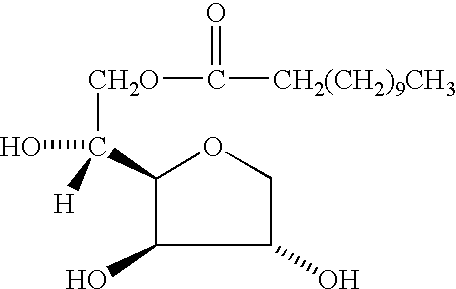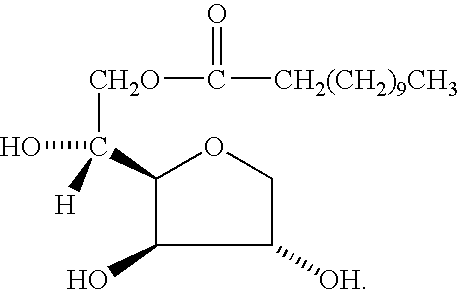Electrically conductive oil-based mud
a technology of oil-based mud and electric conductivity, which is applied in the field of oil-based muds or fluids, can solve the problems of poor image, unfavorable signal-to-noise ratio, and direct affecting the quality of the resolved imag
- Summary
- Abstract
- Description
- Claims
- Application Information
AI Technical Summary
Benefits of technology
Problems solved by technology
Method used
Image
Examples
Embodiment Construction
Test samples of example ECOM formulations were prepared for laboratory testing as follows:
1. To a mixing cup add the PETROFREE.RTM.LV, GELTONE.RTM.II, DURATONE.RTM.HT, lime, DF-01 (or DF-03), and EZ MUL.RTM.NTE. Shear on a multimixer for 10 minutes.
2. Add the calcium chloride brine and shear for 10 minutes.
3. Treat with RS1100.TM., 1 lb / bbl of DEEP-TREAT.TM., and shear for 5 minutes. The fluid's viscosity will increase during this process.
4. Treat with Disponil SML.TM. and allow to shear for 5-10 minutes. The fluid may still appear quite viscous at this point in the procedure.
5. Add weighting material and other solids to the fluid. Shear 20-30 minutes, or until viscosity reduction is noticed.
6. Hot-roll the fluid overnight or go directly to higher temperature aging.
7. Confirm electrical conductivity using a dip-probe conductivity meter capable of measuring values as small as 1 .mu.s / cm.
Laboratory Testing Indicated the Following General Results and Conclusions:
The preferred base flui...
PUM
| Property | Measurement | Unit |
|---|---|---|
| volume percent | aaaaa | aaaaa |
| volume percent | aaaaa | aaaaa |
| frequency | aaaaa | aaaaa |
Abstract
Description
Claims
Application Information
 Login to View More
Login to View More - R&D
- Intellectual Property
- Life Sciences
- Materials
- Tech Scout
- Unparalleled Data Quality
- Higher Quality Content
- 60% Fewer Hallucinations
Browse by: Latest US Patents, China's latest patents, Technical Efficacy Thesaurus, Application Domain, Technology Topic, Popular Technical Reports.
© 2025 PatSnap. All rights reserved.Legal|Privacy policy|Modern Slavery Act Transparency Statement|Sitemap|About US| Contact US: help@patsnap.com



